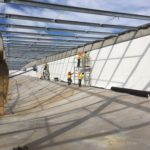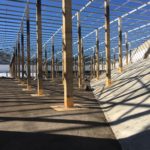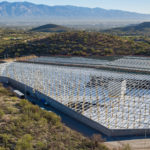Company:
Colorado Lining International Inc. Parker, CO
Project Details
Fabric 1
CSPE 45 mil
Producer:
OTHER
Supplier:
Burke Industries
Fabric 2
Geotextile
Producer:
TenCate Geosynthetics
Supplier:
TenCate Geosynthetics
Engineer Name 1
Erin Lansey
Engineer Company 1
HDR Inc.
Design Name
Contractor: John Arenz
Design Company
PCL Civil Constructors
Architect Name
Contract Holder: Samual Williams
Architect Company
Truesdell Corp
Subcontractor Name
John Heap
Subcontractor Company
Colordo Lining International, Inc.
Project Manager Name
Project Owner: Dorothy C. Dolan
Project Manager Company
Tucson Water, City of Tucson, AZ
Please describe the project specifications
This substantial rehabilitation of Tucson’s water delivery system included the lining system removal and installation, roof replacement, and many other elements.
The liner system installation required synthetic rubber liner for the first of two cells totaling 207,000 square feet inside Clearwell. The new lining system was built out of custom fabricated panels to fit between the columns and was specified to be a white 45 mil CSPE-R liner, with 8 ounce Non-Woven Geotexile underlayment for protection and drainage layer; New liner installed over entire reservoir surface which included a 14.8’ wide panel hung on a 13’ high vertical wall section that was 1683’ long.
Project also required mechanical attachment of the liner around 143 support columns and multiple other structures.
General Contractor specifications included draining and plugging of reservoir, deck (ROOF) removal of entire cell, removal of girder over columns, sandblasting A.B.S at top of columns along center wall down to clean metal, X-bracing and new deck roofing along with piping and valve work as required to retrofit the reservoir for another 30 years of service.
What was the purpose of this project? What did the client request?
The reservoir is Tucson Water’s largest potable water storage facility, which consists of two equal sized cells, both holding 30 million gallons each. CSPE-R material was ultimately agreed upon as the best lining system due to the products excellent resistance to chlorinated water. CSPE-R proved to be the best choice for the project due to its outstanding puncture resistance and good combination of welded seams followed by adhesive patching on all t-joints and cross seams. The material is also flexible enough to be fabricated into larger panels built to engineered tolerances to fit between the columns properly and limit the amount of field welding required.
What is unique or complex about the project?
Tight Deadline: The need to have one of the cells, a critical component of Tucson’s water delivery system, in service by peak season demand made for a tight deadline and thoughtfully coordinated schedule. As of Monday June 5th, usage was already reported to be 116.65 MGD.
Vertical Walls - Besides being Tucson’s largest potable water storage facility, the project included a 13 ft completely vertical wall around the 1,683-foot perimeter of the cell, which required crews to use a special bench and scaffolding to install this critical element of the project.
Mechanical Attachment and More…: The cell had 143 vertical columns which required attaching liner using 316 stainless steel battens fastened around each column. Special care and attachment processes were also required for the stairs, inlet, and outlets as well as all the bends and turns that required proper patching and sealing for all corners. This was done in conjunction with a fluid applied coating at all locations in combination with the mechanical attachment. Total mechanical attachment for the project included 6,608 Lineal Feet and 13,216 - ½” X 4” anchor bolts drilled and epoxy set to hold the (¼ X 2”) 316 stainless steel batten material back to the concrete and create a water tight seal.
Accessing the Dam Face: Crews were trained to use harnesses and repel equipment for access to areas only reachable via the dam face. Crews also needed to pay special attention so they did not damage any rebar or structural elements on the dam side of the reservoir when drilling holes for setting the mechanical attachment. Use of special equipment was necessary during this part of the job to make sure crews were penetrating and hitting bolt depth, and at the same time continuing to be cautious to not harm structural components.
Site Access: The job site only had one way in and one way out, which made transport of all materials a lengthy and carefully coordinated effort. In addition to the property access all liner material was moved in through the roof of the structure using a crane also requiring careful planning. Special dollies were required to move material around on the upper bench of the cell, and these were constructed/provided by the liner installation supervisor.
Quality Control: All Welders were tested every morning and afternoon prior to any welding being done on site to ensure quality seams. Patches were also scribed and air lance tested as the job progressed. All factory produced material followed a similar in house QC program to ensure compliance with the specification and industry standards.
Anti –Bridging Bar: Required that two separate layers of liner material share a common mechanical bar attachment to prevent the liner material from sliding down the slope and pulling the vertical wall sections away from the wall. It required a layer of butyl tape between each layer of material (two layers total) and the flap created by the second layer was welded down around the perimeter.
What were the results of the project?
The project passed all testing requirements for potable water storage and was delivered on time with no leaks. The team approach to the project was one of the key drivers, partnering between the City of Tucson and the Design-Build team helped bring this job into service with exceptional results in both quality and timeliness. The reservoir will now be in service for decades to come. Phase 2 is scheduled to start in the fall of 2017 and finish in late spring of 2018 with the same team of Contractors on board.
Content is submitted by the participant. IFAI is not responsible for the content descriptions of the IAA award winners.
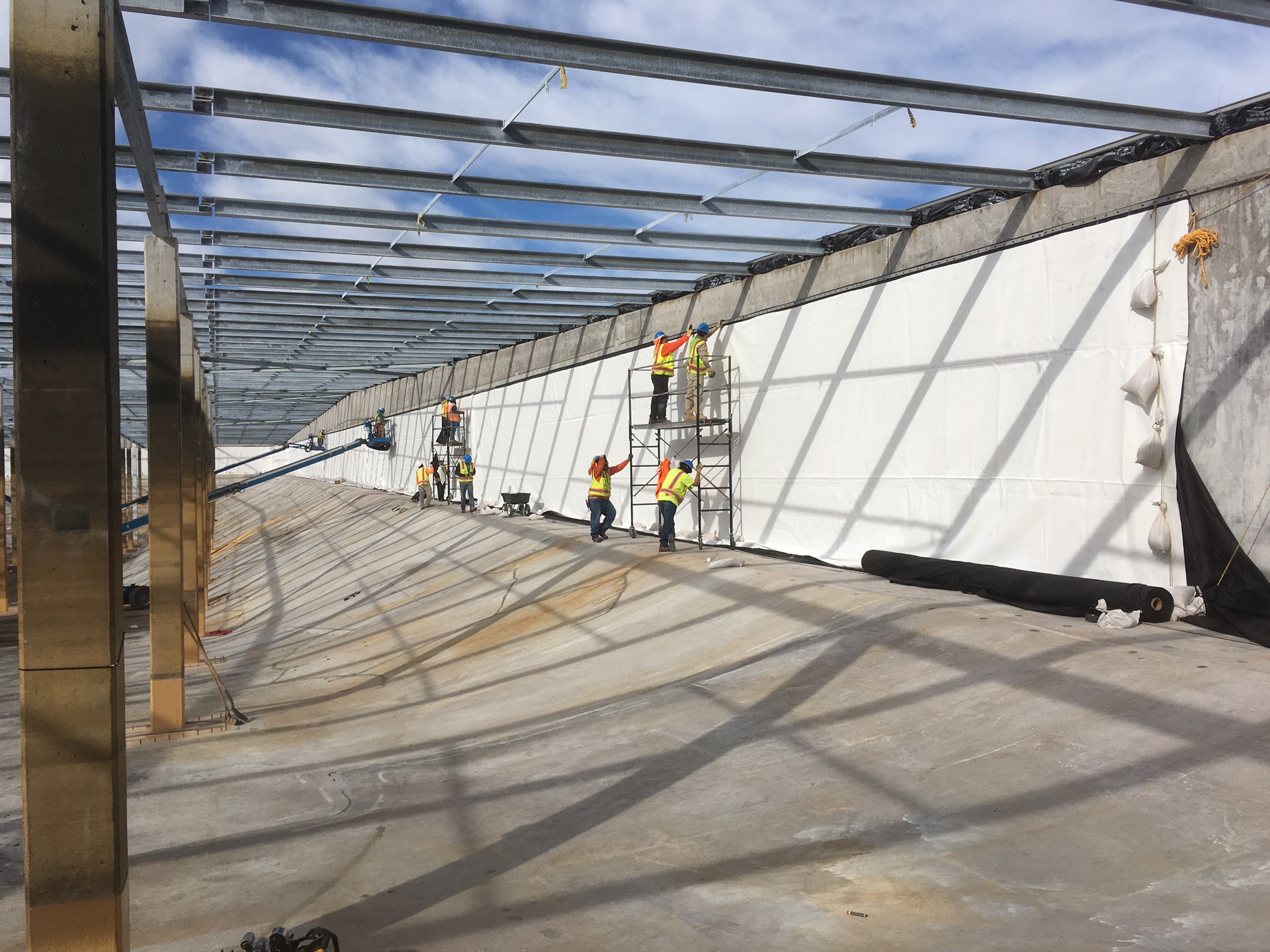
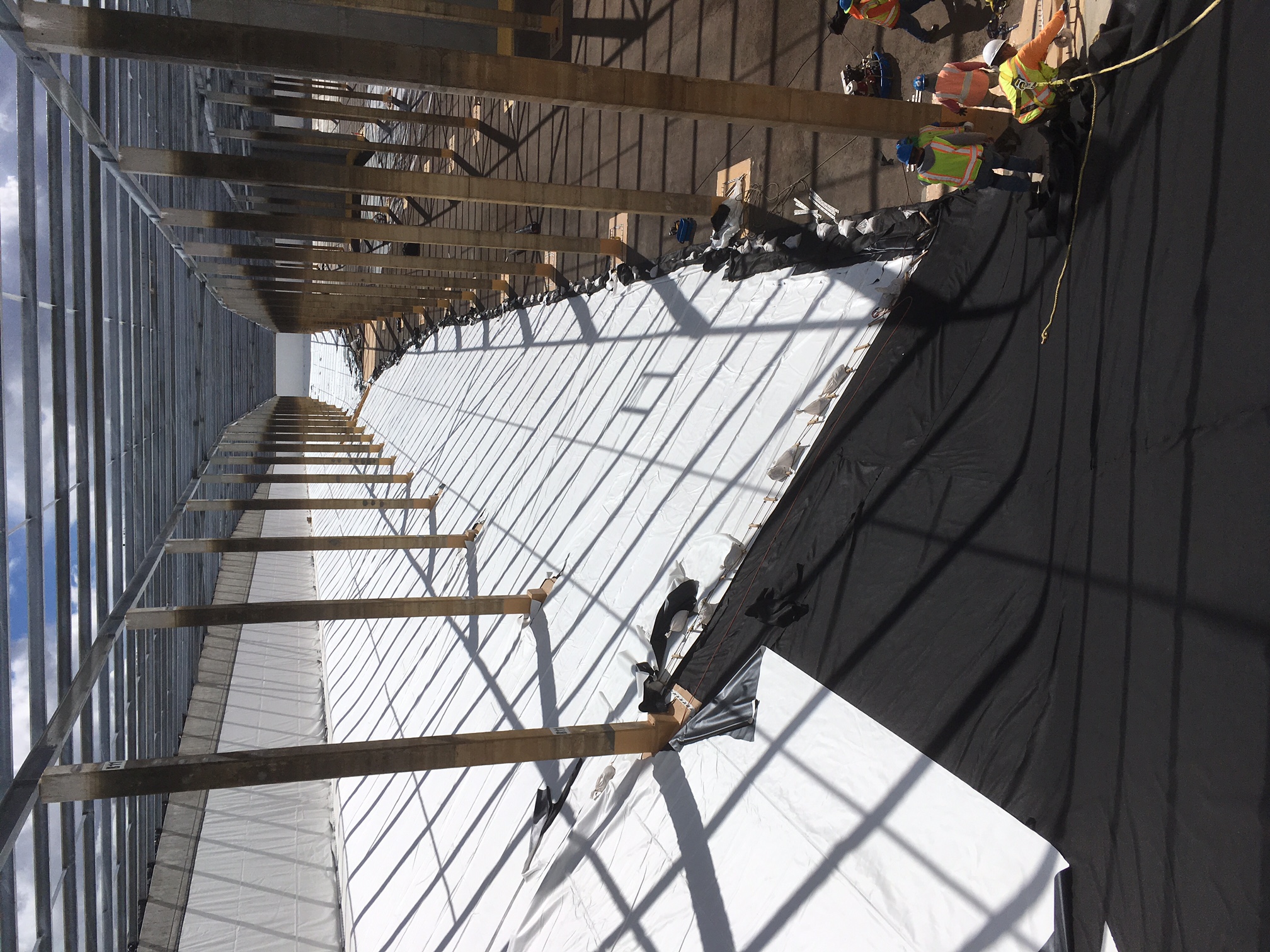
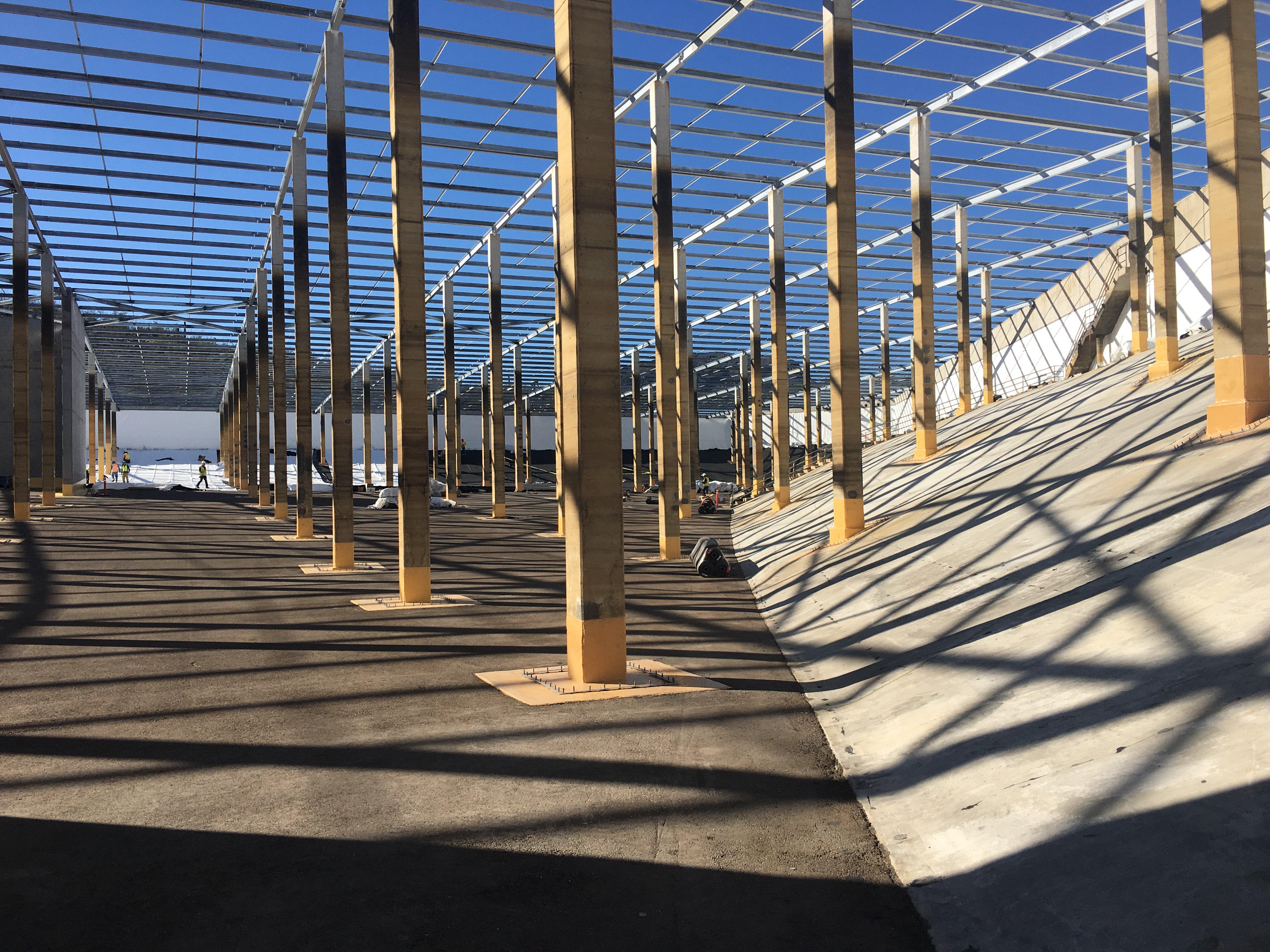
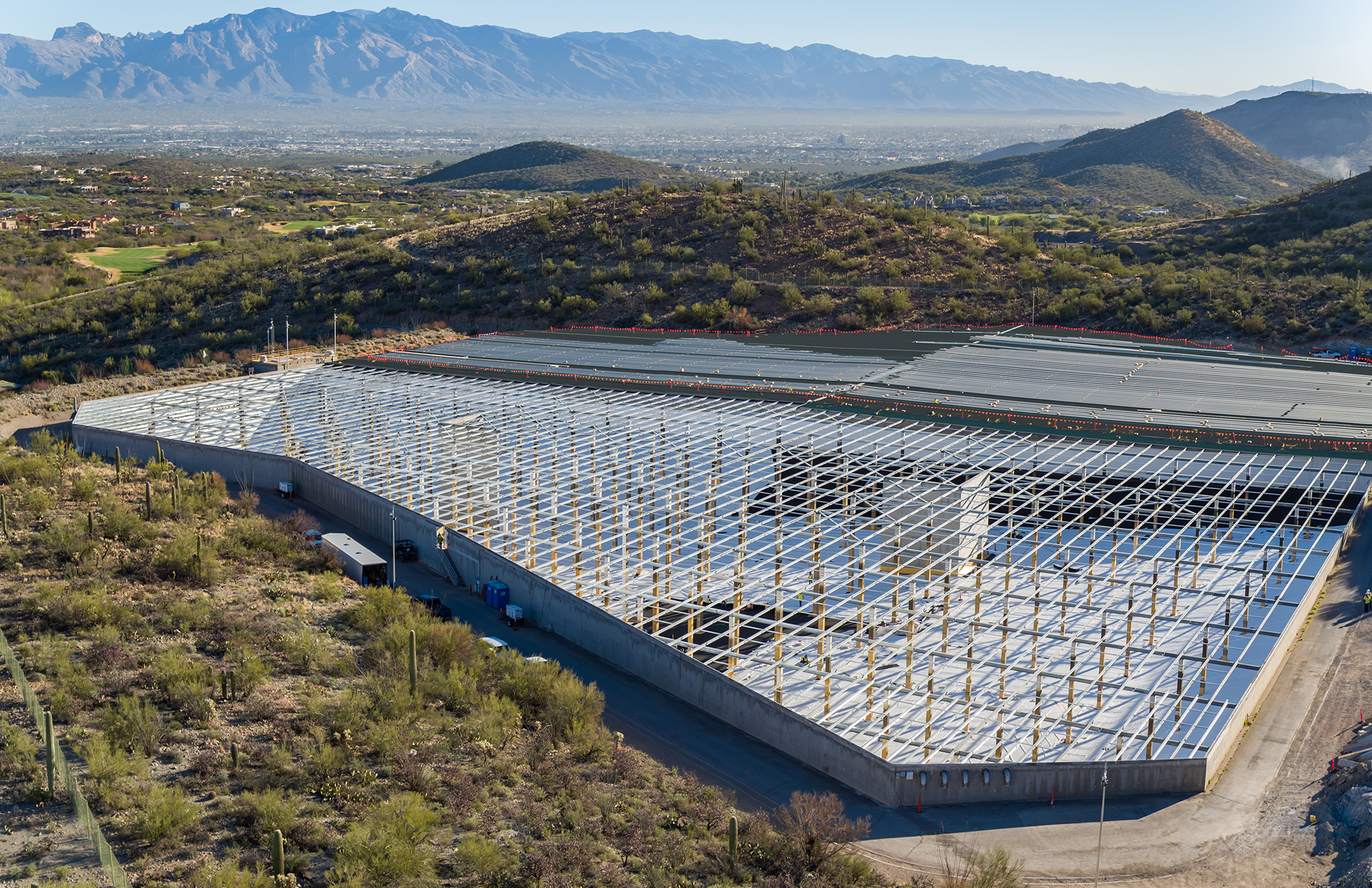
 TEXTILES.ORG
TEXTILES.ORG



